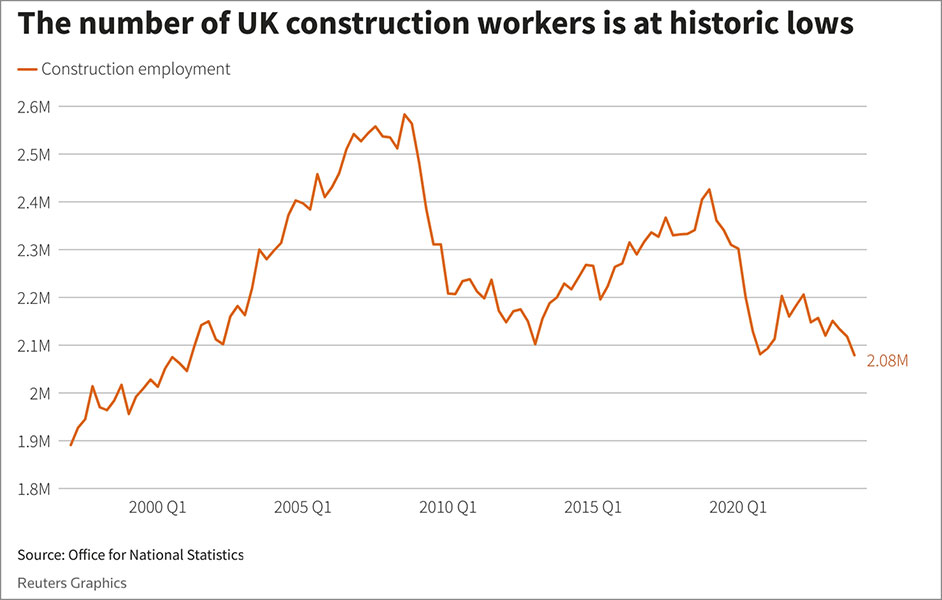Build A Better Housing Policy
If they don’t come, they can’t build it.
UK Prime Minister Rishi Sunak and opposition leader Keir Starmer tout ambitious plans to ease Britain’s chronic housing shortage by adding more new homes. But with little hope of luring builders from abroad, the plunge in the number of domestic construction workers will ensure those remain empty election promises.
Starmer told, opens new tab a televised debate on Tuesday that Britain’s dream of homeownership has “all but gone” due to sky-high prices caused by a lack of housing supply. If his Labour party wins the July 4 election – as seems likely given its 22-percentage-point lead in the polls – he has pledged, opens new tab to build 1.5 million new homes over five years. That’s remarkably similar to the government’s estimate, opens new tab that the country needs 300,000 new homes a year.
Both parties’ diagnosis is correct. UK first-time homebuyers face the most difficult financial environment in 70 years, according to a recent report by the Building Societies Association. That’s because real wages, discounted for inflation, have stagnated over the past 15 years but house prices have risen by around 80%, according to official figures.
Yet Sunak and Starmer don’t base their proposed solution on solid ground. Their pledges to “get Britain building again” overlook a simple fact: there aren’t enough workers to do that.
In the first quarter of this year, there were fewer than 2.1 million construction workers in Britain. That’s the lowest level since 2001, when just 146,700 new homes were built. The biggest loss of workers occurred during the pandemic, when building activity plunged. More than 346,000 construction jobs have disappeared since 2019. Noble Francis, economics director at the Construction Products Association, estimates that construction vacancies are currently 42% higher than the average of 2018 and 2019.

On top of that, the number of new houses is already behind the politicians’ target – only 234,400 net homes, subtracting demolitions and conversions, for example into offices, were built in 2022-23, government figures show, opens new tab. And given the lack of workers, the CPA forecast a drop in new housing volumes to around 180,000 in each of the next two years.
Better training would alleviate this problem but only over the long run. A shorter-term solution – immigration – is currently anathema to both parties. Without either, though, an unprecedented surge in housing activity is a pipe dream. A more realistic approach would be to ensure that house prices don’t grow faster than earnings by changing lending rules, taxation and planning permissions.
Once the electioneering ends, whoever lives in 10 Downing Street – an old home not available to first-time buyers – will have to start building a better housing policy.
UK Prime Minister Rishi Sunak told a televised debate with opposition leader Keir Starmer on June 4 that the Conservatives had built 1 million homes since 2019. Starmer countered that a Labour government would build 1.5 million homes in five years.
The two were meeting in the first live debate ahead of a general election on July 4.
Source: Reuters









Leave a Reply
Want to join the discussion?Feel free to contribute!